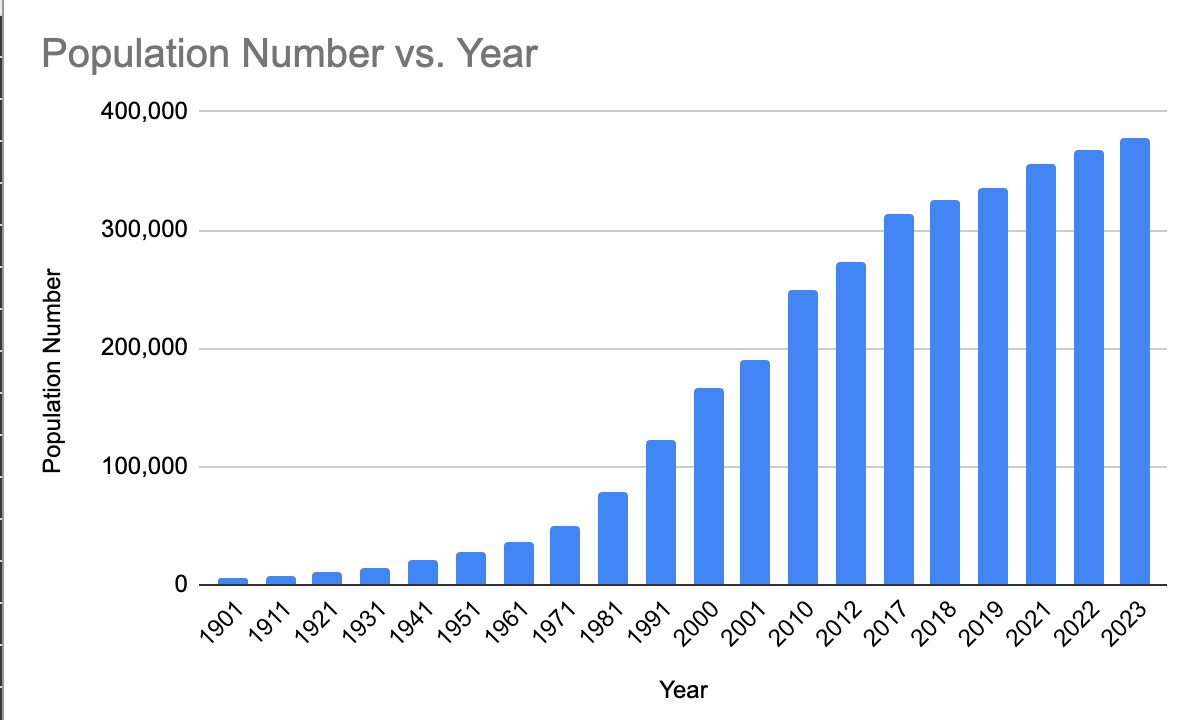Let’s talk about the Amish and how many of them we might see in 2050. We’ll use numbers and trends to make our best guess about their future.
As a quick reminder, the Amish population in the US grew from 6,300 individuals in 1991 to 378,190 individuals in 2023.
During World War II, there were fewer than 10,000 Amish people in the USA. By the year 2000, the population had grown to 166,000. Now, there are about 378,190 Amish individuals in the US.
Take a look at the data below to see how the Amish population grew from 1901 to 2023.

I’ll use this information to try to predict how many Amish there will be in 2050.
There’ll Probably Be 625,000 Amish in 2050
I’ll first calculate the total Amish population growth from 1901 to 2023 to get an overview of their numbers.
I’ll then use only the 2012-2023 average anual growth rate to estimate the 2050 population as it’s closer to present-day trends.
Step 1: Calculate the total population growth from 1901 to 2023
- Population in 1901: 6,300
- Population in 2023: 378,190
⇒ Population Growth = 378,190 – 6,300 = 371,890 individuals
Step 2: Calculate the number of years in this period (1901 to 2023): 2023 – 1901 = 122 years
Step 3: Calculate the average annual growth rate
Average Annual Growth Rate = Population Growth / Number of Years
Average Annual Growth Rate = 371,890 / 122 = 3,048 individuals per year (between 1901 to 2023).
Interestingly, if we’re taking into account only the 2012-2023 period, the growth rate is 9,498 individuals per year (273,710 in 2012 vs 378,190 in 2023).
Step 4: Apply the average annual growth rate to estimate the population in 2050
There are 26 years from 2024 to 2050 (2050 – 2023).
⇒ Important Note:
- I’ll use only the 2012-2023 growth rate to estimate the 2050 Amish population as it’s closer to present-day dynamics.
Estimated Population in 2050 = Population in 2023 + (Average Annual Growth Rate * Number of Years)
So, that’s 378,190 + (9,498 * 26), this means 378,190 + 246,948 = 625,138 individuals.
The estimated Amish population in 2050 is around 625,138 individuals.
Keep in mind that population growth can be influenced by various factors, and predictions are based on historical data and assumptions.
Amish Population Growth: 1991-2010 vs 2012-2023
The average decade-over-decade population growth from 1901 to 2010 was approximately 26,967 individuals (6,300 in 1901 vs 249,000 in 2010, this means an increase of 2,227 individuals per year).
After 2010, the growth rate reached 9,498 individuals per year (273,710 in 2012 vs 378,190 in 2023).
The general consensus is that the Amish population doubles every two decades. However, we can’t assume a doubling every 20 years forever.
Amish Families Are Having Fewer Children
Recently, there’s been a change in the number of kids Amish families are having. Traditionally, Amish families are known for having a lot of children (8-10). More progressive Amish families are now having 6-7 kids on average.
In time, this will naturally lead to a slower increase in population because there are fewer new people being born into the community.
While not openly discussed, many progressive Amish families are probably using family planning strategies and even birth control methods.
A few reasons why Amish families might be having fewer kids:
- It’s getting more expensive to live and run big farms. This makes families think twice about having a lot of kids.
- There’s not as much affordable farm land as there used to be. This can make big families less practical.
- As the Amish interact more with non-Amish society, they get exposed to different views about family size.
Some younger Amish individuals decide to leave the community or chose not to follow the traditional Amish lifestyle. This also leads to a slower population growth because there are fewer new members joining.
Despite these changes, one thing is clear: the Amish population continues to grow and will probably count over 600,000 individuals by 2050.